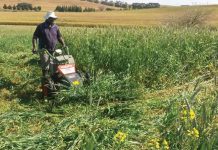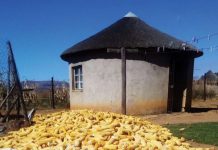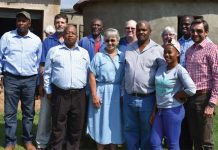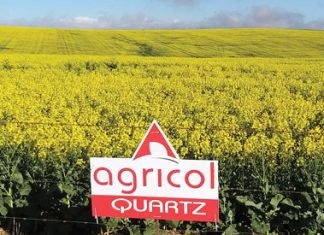March 2017
KIM COETZEE and PETRUS DELPORT, ARC-Small Grain Institute, Bethlehem
The 2015 season was one of the most challenging production seasons for South African irrigation wheat producers. Soaring temperatures during the critical grain filling period taxed producers to keep up with the high water demands of their crops. This resulted in lower yields in most parts of the irrigation areas.
With 2015 declared as the driest year since 1904 by the South African Weather Service, the 2016 production cycle was undoubtedly going to create new challenges.
The persisting drought conditions resulted in government limiting the 2016 water usage from the Vaal and Orange Rivers by 20% and 15% respectively. Producers in the Northern Cape, North West Province, Free State and Limpopo regions therefore had to reformulate their business strategies in order to cope with the water shortages.
In the production guidelines made available by the ARC-Small Grain Institute (ARC-SGI), correct cultivar choices have always been emphasised. With the drought expected to persist during 2017, suitable cultivar choices will be essential for successful wheat production in the irrigation areas.
The irrigation wheat package of the ARC-SGI consists of five cultivars, namely Kariega, Krokodil, Duzi, Buffels and Sabie (see Table 1 for a summary of typical cultivar yield potentials).

The oldest cultivar still available is Kariega, which has been on the market since 2001. The popularity of Kariega is largely due to the fact that it is an extremely reliable and stable variety. It might not deliver the same yields as the newer higher yielding cultivars, but in difficult years where some cultivars may struggle, Kariega will hold its ground and continue to produce profitable yields.
For this reason, Kariega has become increasingly popular among small scale farmers. Average yields of 9 t/ha can be expected, but Kariega has been known to produce yields exceeding 10 t/ha. It has a medium/long growth period and also has excellent bread baking quality. Kariega was used for many years as the bread bakingquality standard after being replaced with a newer variety.
Duzi is also a favourite among producers, as it has a medium growth period and consistently produces excellent yields. It can easily produce yields of up to 9,5 t/ha, but has the potential to reach yields of up to 10,7 t/ha. Duzi was classified for commercial production during 2004 along with Krokodil.
Krokodil is a high yielding cultivar with a medium/long growth period. During the 2016 production season, it produced the third highest yields in the Hopetown district. Yields of up to 10,3 t/ha was realised. When looking at average yields, Krokodil is expected to produce yields of 9,7 t/ha, but is able to realise yields of 11 t/ha as it did during the 2013 and 2014 production seasons.
The last two cultivars in the package are Buffels and Sabie. These two cultivars are both long growth period cultivars. Buffels produces average yields of approximately 9 t/ha, but is more than capable of producing at least 10,5 t/ha.
Sabie was released to replace Kariega as it realises higher yields and possesses the same risk reduction factors as Kariega. Both cultivars are resistant to pre-harvest sprouting, are Fusarium tolerant and resistant to stripe rust. These three are the primary risk factors in the irrigation area. 
When considering Sabie, seeding density is of utmost importance as the cultivar is prone to lodging at too high planting densities. To realise maximum yields, 175 to 225 plants per square metre is recommended. This is approximately 80 kg/ha to 90 kg/ha. If these guidelines are followed, average yields of 9,5 t/ha can be expected, although Sabie is more than capable of producing up to 11 t/ha.
ARC-SGI is currently in the process of registering three new cultivars and producers will be informed when they will be made available.
This research was made possible through financial support from the Winter Cereal Trust.
Publication: March 2017
Section: Focus on


















